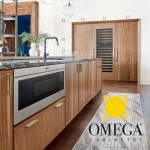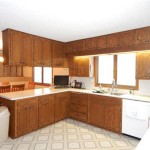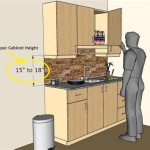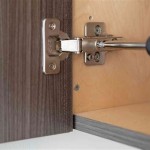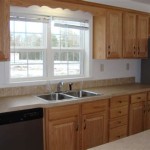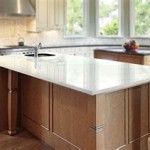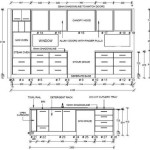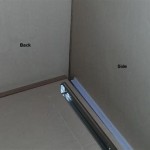What Kind of Paint to Use on Cabinets Without Sanding?
Repainting kitchen cabinets can be a daunting task, especially when the prospect of sanding arises. Sanding old paint can be messy, time-consuming, and require specific tools. Thankfully, there are specialized paint types specifically designed for use on cabinets without sanding, offering a convenient and efficient solution for a refreshed kitchen. This article will explore the different types of paint suitable for cabinet refinishing without the hassle of sanding, providing insights into their suitability for specific needs.
1. Bonding Primer
Before considering paint types, it is crucial to acknowledge the importance of a bonding primer. This essential layer acts as the foundation for the paint, ensuring a smooth and durable finish. Bonding primers are specifically formulated to adhere to existing surfaces, even those with imperfections or glossy finishes. They create a strong bond, preventing paint from peeling or chipping in the future. When selecting a bonding primer, choose one specifically designed for cabinets, as it will generally offer superior adhesion and durability.
Applying a bonding primer is a vital step, even when using self-priming paint. Self-priming paint contains a built-in primer, but it is usually not as robust as a dedicated bonding primer. Applying a separate bonding primer ensures a more durable and reliable finish, especially on surfaces with potential issues like unevenness or existing paint with a high sheen. Choosing a bonding primer specifically for cabinets is recommended for optimal results.
2. Self-Priming Paint
Self-priming paint offers a convenient option for cabinet refinishing without sanding. This type of paint combines a primer and paint in one, eliminating the need for a separate primer application. It is ideal for surfaces with minimal imperfections or a semi-gloss finish. However, it is crucial to remember that self-priming paint is not a substitute for proper surface preparation. It is still essential to clean and degrease the cabinets thoroughly before applying the self-priming paint. This type of paint works best on surfaces that are relatively smooth and free from significant imperfections.
While convenient, self-priming paint might not be the best choice for cabinets with significant imperfections or a high-gloss finish. In such cases, a separate bonding primer followed by a regular paint application is recommended. This method will ensure a more durable and professional finish. When using self-priming paint, choose a product specifically formulated for cabinet use, as it will contain specific resin formulations and pigments designed for optimal adhesion and durability on cabinet surfaces.
3. Chalk Paint
Chalk paint has gained immense popularity in recent years due to its ease of use and forgiving nature. It does not require sanding and can be applied directly over existing paint, offering a unique distressed look. The chalky finish creates a vintage aesthetic and can be further customized with waxes or glazes for added depth and personalization. Chalk paint adheres well to various surfaces, including cabinets, making it a popular choice for DIY projects.
Chalk paint offers a unique advantage of being easily distressed, allowing for a more rustic or vintage look. It is available in various colors, providing a wide range of options for creating a personalized aesthetic. When choosing chalk paint for cabinets, it is essential to select a product specifically designed for furniture or cabinetry. These formulations are typically more durable and offer better adhesion to wood surfaces.
4. Epoxy Paint
Epoxy paint is a durable and highly resistant option for cabinet refinishing. It is known for its exceptional adhesion, wear resistance, and water-resistant properties. Epoxy paint is typically applied in two components, a resin and a hardener, which mix together to create the final paint. This type of paint is suitable for areas with high traffic and moisture, making it a popular choice for kitchen cabinets. While epoxy paint is highly durable, it can be more challenging to apply than other paints, requiring specific techniques and tools. It is also essential to ensure proper ventilation during application and drying due to its strong odor.
Epoxy paint can also be used on cabinets with significant imperfections or a high-gloss finish. The strong bonding properties of epoxy paint allow it to adhere well to even the most challenging surfaces. However, it is important to note that epoxy paint can be more difficult to remove in the future should the need arise. Therefore, it is essential to consider the long-term implications before choosing epoxy paint for cabinet refinishing.
5. Milk Paint
Milk paint is a natural paint type made from a blend of milk protein, pigments, and lime. It offers a unique matte finish with a slightly textured feel. Milk paint is known for its good adhesion, but it is less durable than some other paint types. It is typically used in areas with low traffic and minimal exposure to moisture. While milk paint allows for a natural and organic finish, it requires careful preparation and application to achieve a desirable result. It is essential to choose a high-quality milk paint specifically designed for furniture or cabinetry for optimal durability and performance.
Milk paint is a popular choice for achieving a vintage or farmhouse aesthetic. Its natural ingredients and unique matte finish contribute to a rustic charm. While it is less durable, milk paint can be sealed with a wax or polyurethane finish to enhance its lifespan and protect it from moisture. When using milk paint, it is essential to follow the manufacturer's instructions carefully for best results.

How To Paint Bathroom Cabinets Without Sanding 8 Vital Steps Grace In My Space

How To Paint Kitchen Cabinets Without Sanding The Budget Decorator

Paint Kitchen Cabinets Without Sanding Six Simple Steps

How To Paint Cabinets Without Sanding

Can You Paint Kitchen Cabinets Without Sanding

How To Paint Fake Wood Kitchen Cabinets Simple Made Pretty 2024

How To Paint Kitchen Cabinets Without Sanding Sustain My Craft Habit

The Easy Way To Paint Kitchen Cabinets No Sanding Building Bluebird

How To Paint Cabinets Without Sanding A Fresh Squeezed Life

Prep And Paint Cabinets Without Sanding
Related Posts

